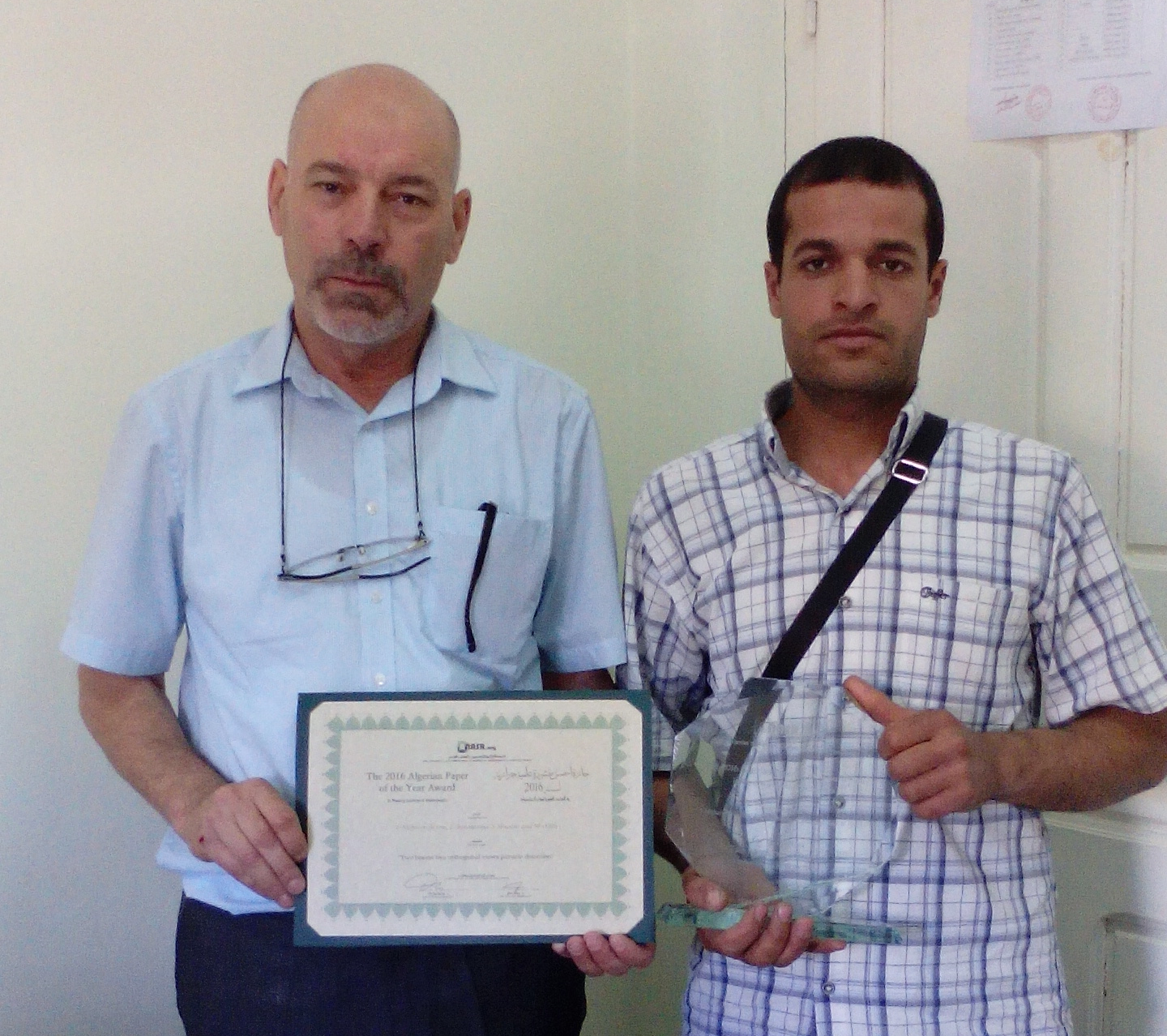Interview | Winners of the 2016 Algerian Paper of the Year Awards in Physical Sciences & Mathematics
Inspire Magazine speaks with Prof Larbi Bouamama Professor of Optics at the Applied Optics Laboratory, Institute of Optics and Precision Mechanics, Ferhat Abbas University of Setif. Prof Bouamama is co-author on the paper entitled “Two beams two orthogonal views particle detection”, which won the 2016 Algerian Paper of the Year Award in Physical Sciences & Mathematics.
Inspire Magazine: Thank you for speaking to Inspire Magazine, and many congratulations for winning the 2016 Algerian Paper of the Year Award in Physical Sciences & Mathematics. Can you tell us what your award paper is about in simple terms?
Larbi Bouamama: The paper deals with a new off-axis digital holography technique. This technique uses only two off-axis beams and gives two simultaneous orthogonal views of the studied object.
IM: Why is this an important scientific problem to address?
LB: One of the challenges in fluid mechanics is now to localize tracer particles with high accuracy. Digital holography is a well-established technique for such a purpose because of its three dimensional aspect. Furthermore, when the object is recorded simultaneously with two orthogonal object beams, the reconstructed orthogonal images permit to localize the object, or the particle, with more accuracy by overcoming the large depth of focus that is inherent in holography.
Unfortunately, for actual photographic sensors, the angle between the two holographic beams, the so-called object beam and reference beam, must be very small. Such a drastic condition needs compact set-ups and will not be very useful for experiments on real applications.
The proposal we describe in our paper can overcome such a condition by using only two beams, which act as object and reference beams at the same time. This configuration saves components and space, on the one hand, and allows for easier handling of the angle condition on the other.

Larbi Bouamama and Soufiane Mebarek-Azzem, from the Applied Optics Laboratory, Institute of Optics and Precision Mechanics, Ferhat Abbas University of Setif
IM: What is the exact contribution(s) of the paper to your field of research and how does it compare to other approaches that exist in the literature?
LB: Many authors, for example Picart et al., Saucedo et al., Malkiel et al. and Kühn et al., have proposed several multiplexing techniques for solving different kinds of problems using multiple views for moving objects, but they all use separate reference beams.
Our proposal uses only two beams and as we result we obtain two images. Our technique is therefore more suitable, for micro or transparent objects, because it gives two reconstructed images with two beams rather than four.
IM: What kind of support, if any, have you received to help you to accomplish this work?

Figures from Azzem, S. Mebarek, et al. “Two beams two orthogonal views particle detection.” Journal of Optics 17.4 (2015): 045301.
LB: This is a good opportunity to acknowledge the great technical support of the Laboratory of Fluid Mechanics and Acoustics at the Central School of Lyon (LMFA-ECL), France, represented by Dr. Serge Simoëns and the Institute of Technical Optics (ITO), Germany, headed by Prof. Wolfgang Osten.
The support of our University and particularly the laboratory of Applied Precision Mechanics (LMPA) headed by Prof. Zegadi are not to be neglected.
IM: How did you get into this particular research and were does it fit in relation to other work conducted in your research lab or institution?
LB: As we are an optical institute, we have interest in all new techniques in optics. Digital holography is a relatively new optical technique that can be applied in a number of other fields such as fluid mechanics, medicine, biology and so on.
With that objective in mind, we had many collaborations with colleagues working in biology in our University where our contribution is essentially focused on giving them a technique that is capable of detecting small changes within their samples.
IM: What is your take on the state of this type of research in Algeria? And how do you see it progressing in the future?
LB: Our aim at the beginning was to develop an optical metrology technique able to track tracer particles in order to adjust mathematical models used in the study of moving microparticles such as in sand winds, pollution studies, etc.
When, the work was started, many technical problems had to be solved and there was a string of events that led to the present work. This field of research is therefore a good opportunity for doctoral students in our institute because of the fact that they work on real optical and precision mechanics subjects and they also work on recent topics which give them the possibility of cooperating with research laboratories in the field worldwide. The work has certainly a great future in Algeria or elsewhere.
IM: Thank you again for speaking to Inspire Magazine, and all the best for your future endeavours.
Prof. Jamal Mimouni announcements and comments on the 2016 Algerian Paper of the Year Award in Physical Sciences & Mathematics
1 Comment so far
BOUDAA DjamelPosted on 9:23 am - Aug 21, 2017
Salam, il serait plus intéressant de séparer les deux disciplines: Sciences physiques et Mathématiques.

About the Author